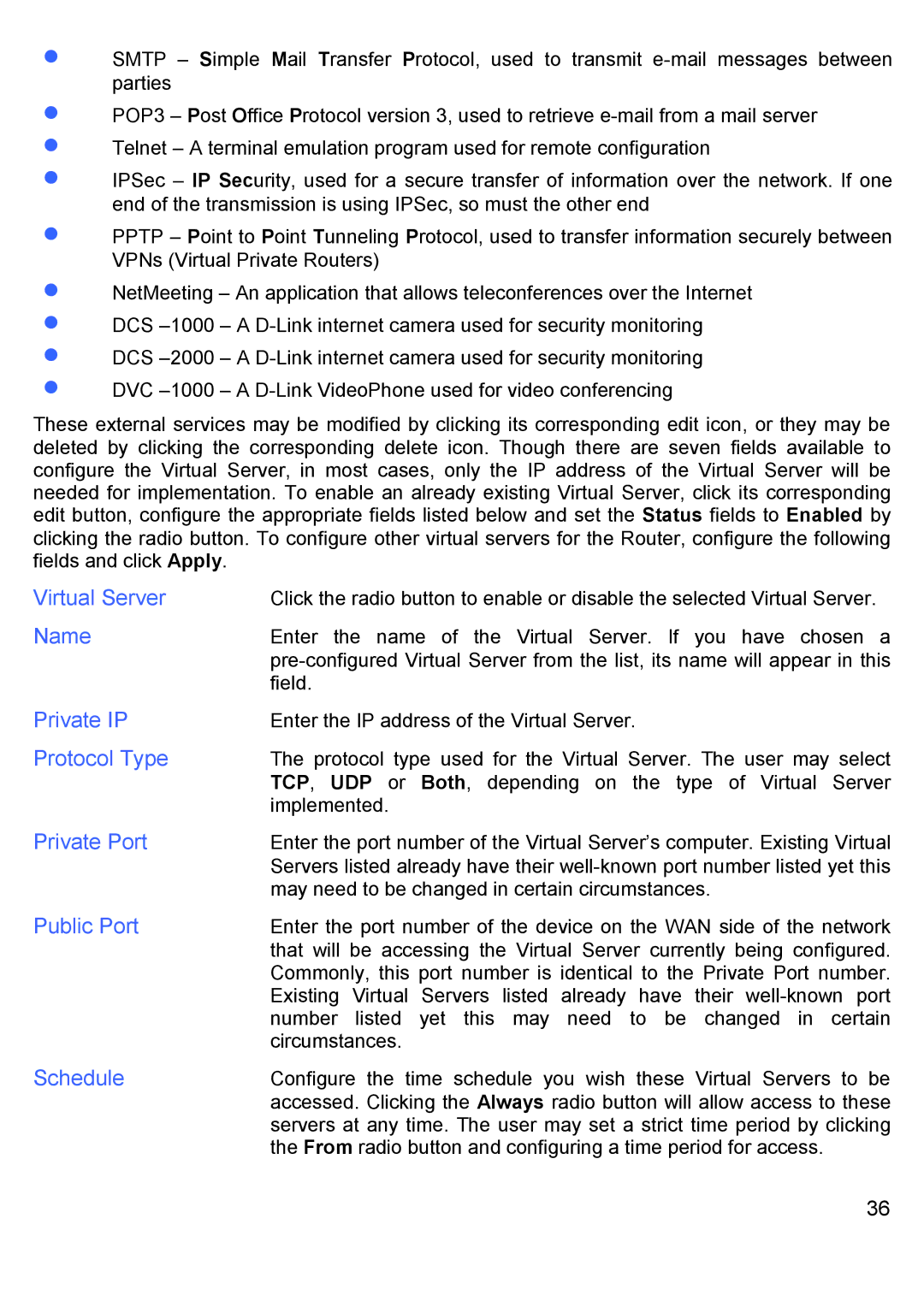•
•
•
•
•
•
•
•
•
SMTP – Simple Mail Transfer Protocol, used to transmit
POP3 – Post Office Protocol version 3, used to retrieve
IPSec – IP Security, used for a secure transfer of information over the network. If one end of the transmission is using IPSec, so must the other end
PPTP – Point to Point Tunneling Protocol, used to transfer information securely between VPNs (Virtual Private Routers)
NetMeeting – An application that allows teleconferences over the Internet DCS
These external services may be modified by clicking its corresponding edit icon, or they may be deleted by clicking the corresponding delete icon. Though there are seven fields available to configure the Virtual Server, in most cases, only the IP address of the Virtual Server will be needed for implementation. To enable an already existing Virtual Server, click its corresponding edit button, configure the appropriate fields listed below and set the Status fields to Enabled by clicking the radio button. To configure other virtual servers for the Router, configure the following fields and click Apply.
Virtual Server | Click the radio button to enable or disable the selected Virtual Server. |
Name | Enter the name of the Virtual Server. If you have chosen a |
| |
| field. |
Private IP | Enter the IP address of the Virtual Server. |
Protocol Type | The protocol type used for the Virtual Server. The user may select |
| TCP, UDP or Both, depending on the type of Virtual Server |
| implemented. |
Private Port | Enter the port number of the Virtual Server’s computer. Existing Virtual |
| Servers listed already have their |
| may need to be changed in certain circumstances. |
Public Port | Enter the port number of the device on the WAN side of the network |
| that will be accessing the Virtual Server currently being configured. |
| Commonly, this port number is identical to the Private Port number. |
| Existing Virtual Servers listed already have their |
| number listed yet this may need to be changed in certain |
| circumstances. |
Schedule | Configure the time schedule you wish these Virtual Servers to be |
| accessed. Clicking the Always radio button will allow access to these |
| servers at any time. The user may set a strict time period by clicking |
| the From radio button and configuring a time period for access. |
36
